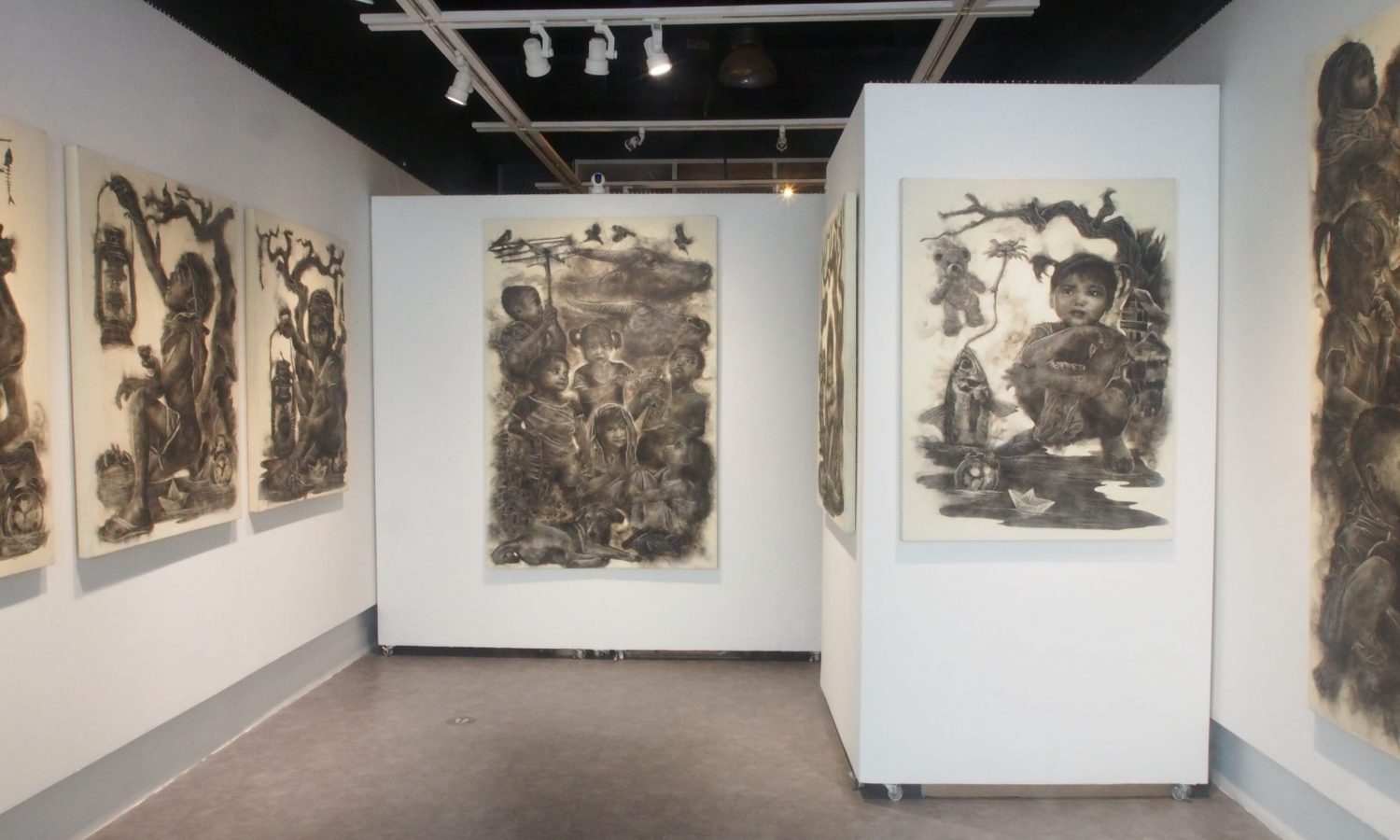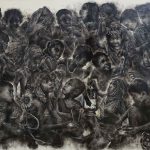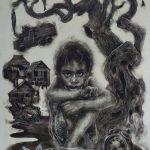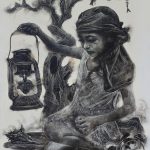LET THERE BE LIGHT
Marvin Dalisay
NOVEMBER 24, 2021
LET THERE BE LIGHT
Written by Carlomar Arcangel Daoana
Strokes of Smoke
A gas lamp—still in use in towns that have yet to be electrified and by fishermen, in the absence of a better alternative, that are venturing out in the open sea—produces a thick black soot. This becomes a problem when the smoke touches any surface as it would accumulate the soft, black remnant of the spent petroleum. For Marvin Dalisay, in his first solo exhibition Let There Be Light, it is the medium through which he animates his vision, usually of children steeped in poverty and confronting the harshness of the world and yet they still offer the most infectious and radiant of smiles.
Almost always the children carry a lamp (the same tool that the artist uses to create his works) that bears the symbol of the Sacred Heart. It’s undeniable that a strong religious theme fuels the artist’s works, in line with how Jesus Christ extols the easy innocence and the unprovoked light-heartedness of the young. In Matthew 18:3, Jesus Christ states: “Truly I tell you…unless you change and become like little children, you will never enter the kingdom of heaven.”
These children, while they can serve as universal figures, are deeply localized in his hometown in Banate, Iloilo. These are the children who, at such a tender age, need to contribute to the household, as suggested by the presence of the images of fish (fishing) and carabao (farming). Playthings such as paper boats and toy trucks do surround them, suggesting that the allure of being carefree has not yet eluded them. The presence of clocks, however, emphasizes that time is running out and the pull of real life intensifies by the day.
In the absence of resources, the children make do with what’s available to them, just like what the artist has done in this show, choosing the unwieldy medium of soot over the more expensive and inaccessible art materials to create his monochromatic figurations. To be able to “paint” very exacting details, which include the tonal modulations, Dalisay has to confine himself in an airtight room so no errand wind could sway the flow of smoke towards an unexpected direction.
Such meticulousness allows him to create anything from wispy strokes such as the aura emanating from the figures to opaque passages evoking water and the trunks of trees. What is impeccable is how the artist renders the faces of the children in their varied facial expressions, ranging from contemplative to something akin to pure, unadulterated joy. The novelty of the medium notwithstanding, these works generate their subtle, moving power from the credible representation of the Filipino children.
For Dalisay, he hopes that the paintings will be read by the viewer as an affirmation of hope amid adversity and the child-like wonder that resides in every one of us. “Sometimes, we’re all just tired of being strong for too long,” the artist states. “We may even feel the fire that drives us seems to be slowly fading, but as long as there’s a fire within ourselves, there’s still light. Let that serve as fuel to move on.”









